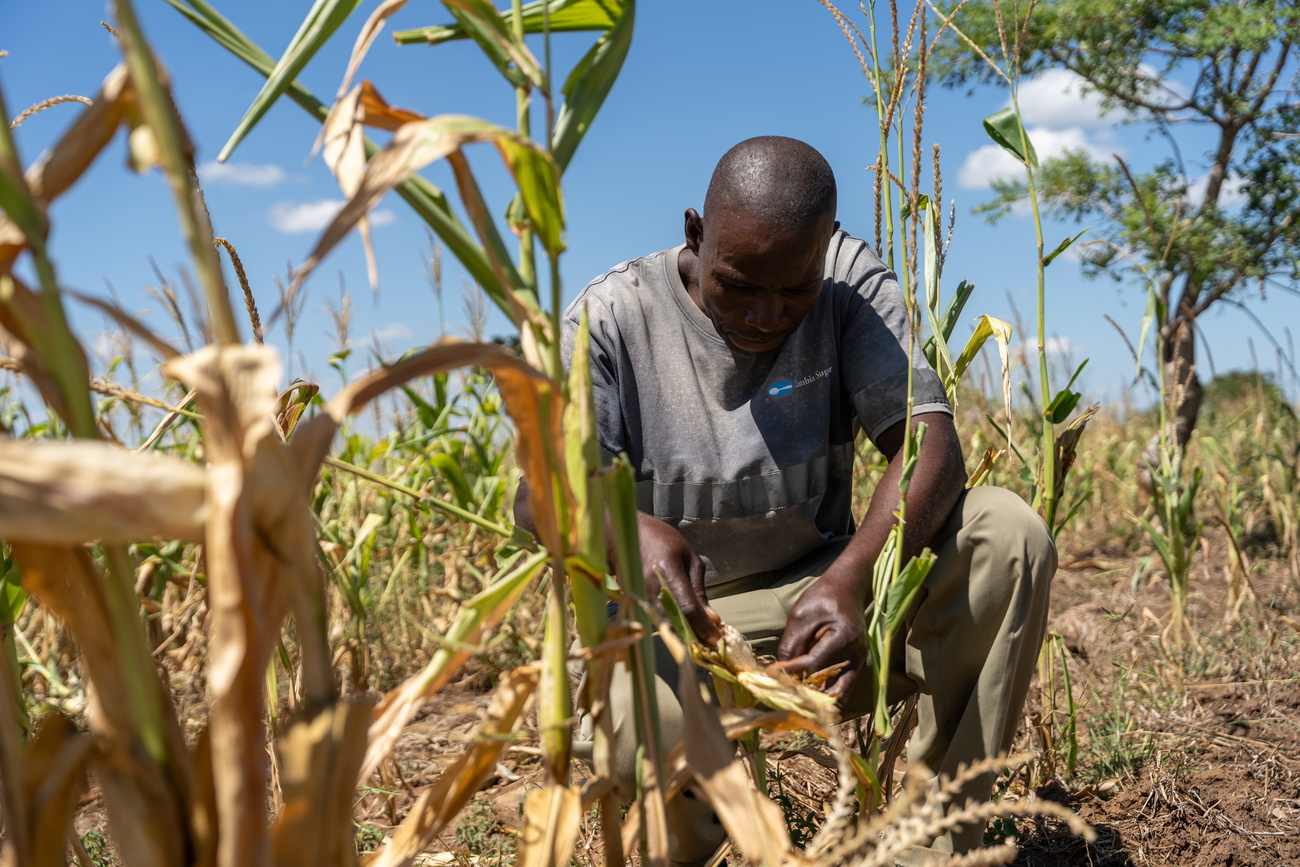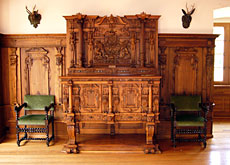“Mushroom violin” outplays Stradivarius

A wood scientist and a violin maker are revolutionising the design of violins by using wood that has been treated with fungus.
In September the two even dared to put their instrument up against a Stradivarius in a “blind listening” experiment – and won!
In a steel and glass building in St Gallen, Francis Schwarze points to his computer screen and the secret of his winning sound.
“We use filamentous fungi,” he said, referring to the group of parasitic fungi that causes a cottony growth on organic substances. “This makes the wood lighter by reducing its thickness.”
The Briton is leader of the wood protection/biotechnology group at the Swiss Federal Laboratories for Materials Testing and Research (Empa). Since the result in Osnabrück, Germany, he is in demand.
In the refrigeration room Schwarze stands among hundreds of fungus-infested wood samples and shows off the fruit of almost six years’ work.
“It’s been a long, arduous journey,” he told swissinfo.ch. “Possibly because we got little support – including financially. I don’t think many people really believed it could work.”
Mini ice age
Two types of fungus turned out to be most suitable, since they decompose the wood cells from the inside, thus making the cell walls thinner. This has a direct influence on the wood’s acoustic properties.
In addition the filamentous fungi re-open the cell membranes – the link to the exchange of material between cells, which with dead wood is blocked. As a result the sound can permeate the wood more quickly and so sounds more harmonious.
The Empa researchers actually simulate a mini ice age. It’s believed that violin makers such as Antonio Stradivari unwittingly benefited from this phenomenon in the 17th century, with the low temperatures of those decades resulting in the wood growing in a very even way.
Timing is everything
Across the country in the Aargau town of Baden, violin maker Michael Rhonheimer sits in his studio which is filled with warmly lit wood and the smell of varnish. This is the birthplace of a Strad-beating violin.
“It’s nice to be sought-after,” he admitted. “Although it’s a shame that it takes away a bit of the energy for work – I’d like to be able to build more violins. At the moment I just don’t have the time.”
He said he might not have even used the tonewood – material with consistent acoustic qualities used in the making of musical instruments – that he selected to be treated by Empa. “But obviously I wanted to be involved and was curious as to what would happen.”
Rhonheimer ended up building two violins from the Empa wood. Sycamore was used for the back and ribs, and Norway spruce for the top.
“Working with the wood that had been treated for six-and-a-half months was just like working with untreated wood,” he said, pointing to the resulting instrument, Opus 58.
Knowing when to stop the fungi growing is vital, he said, explaining that eight months would have been too long.
And the winner is…
Osnabrück, September 1: five violins line up behind a white curtain and the British virtuoso Matthew Trusler plays works by Brahms and Mendelssohn on all of them.
One is Trusler’s own Stradivarius, built in 1711 and worth $2 million (SFr2.04 million); two have been built by Rhonheimer.
As part of the town’s 27th Tree Preservation Day, 180 volunteers and a renowned panel of experts sit in the hall and listen intently.
“It was obvious to me that [my violins] didn’t have a chance,” Rhonheimer said.
For his part, Schwarze thought the Stradivarius sounded the best “because its sound was beautifully round and harmonic”.
But the audience and jury disagreed, eventually picking Opus 58 as the best-sounding violin.
“I had already heard this violin at Easter, when it was unvarnished,” Schwarze said. “That was a really moving moment. One of the highlights of my life.”
Negotiations
What’s more, Schwarze believes the new fungus method will be “very significant” for the building of violins in the future.
“Until now only star soloists could play on a Stradivarius,” he said, adding that negotiations are underway between Empa, tonewood dealers and violin makers, but that he can’t go into the details.
He expects however that in the medium term “Empa or an Empa spin-off will cultivate fungus tonewood and make it available for every violin and guitar maker”.
Christian Raaflaub in St Gallen and Baden, swissinfo.ch (Adapted from German by Thomas Stephens)
Violins produced by Antonio Stradivari during the late 17th and early 18th centuries are reputed to have superior tonal qualities. Dendrochronological studies have shown that Stradivari used Norway spruce that had grown mostly during the Maunder Minimum, a period of reduced solar activity when relatively low temperatures caused trees to lay down wood with narrow annual rings, resulting in a high modulus of elasticity and low density.
The main objective of Francis Schwarze’s study was to determine whether wood could be processed using selected decay fungi so that it became acoustically similar to the wood of trees that have grown in a cold climate.
This was investigated by incubating resonance wood specimens of Norway spruce and sycamore with fungal species that can reduce wood density but lack the ability to degrade the compound middle lamellae (membranes), at least in the earlier stages of decay.
Microscopic assessment of the incubated specimens and measurement of five physical properties (density, modulus of elasticity, speed of sound, radiation ratio and the damping factor) using resonance frequency revealed that in the wood of both species there was a reduction in density, accompanied by relatively little change in the speed of sound. Thus, radiation ratio was increased from “poor” to “good”, on a par with “superior” resonance wood grown in a cold climate.

In compliance with the JTI standards
More: SWI swissinfo.ch certified by the Journalism Trust Initiative














You can find an overview of ongoing debates with our journalists here . Please join us!
If you want to start a conversation about a topic raised in this article or want to report factual errors, email us at english@swissinfo.ch.